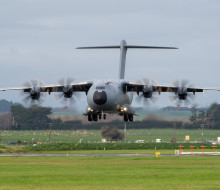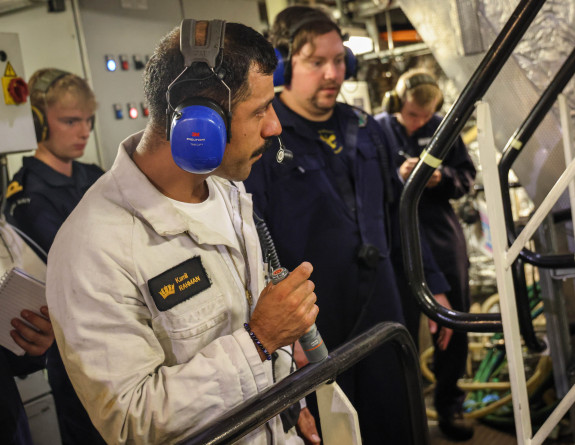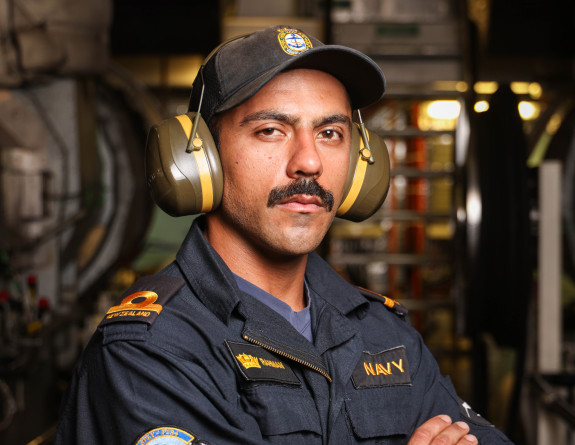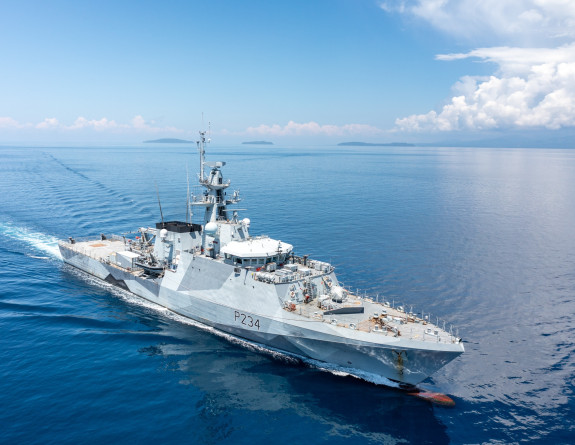
European air forces flying in for New Zealand visit
23 July 2024
Unfortunately you are viewing this website on an outdated browser which does not support the necessary features for us to provide an adequate experience. Please switch to a modern browser such as latest version of Google Chrome, Mozilla Firefox, Apple Safari or Microsoft Edge.
Ngā mihi nui
Navy engineer Sub Lieutenant Kamil Rahman says he learns best when he gets stuck in. He’s found that niche serving in a roving Royal Navy patrol vessel.
SLT Rahman is an Assistant Marine Engineering Officer aboard HMS Spey, one of two River-class Offshore Patrol Vessels on long-term deployment to the Indo-Pacific.
He’s been with the Royal Navy for five months as part of an 18-month exchange programme with the Royal New Zealand Navy.
And while he’s a long way from New Zealand, he says the Royal Navy’s similar processes, high standards and ‘getting jobs done’ attitude makes him feel right at home.
He got the posting after completing his Systems Engineering and Maintenance Course (SEMC) at training establishment HMS Sultan in the United Kingdom.
“I got to spend a bit of time in HMS Sutherland, a Type 23 frigate, and I specifically wanted to get in a small ship to get as many days sailing as possible. I tend to learn best by getting stuck right in.”
Aboard Spey, his role is a training position in the Marine Engineering (ME) Department, supplementing at the middle management level.
“This means I get involved in the hands-on jobs in the ME sections as well as learning from my mentors on how to manage the engineering department.
“It’s been busy and equally rewarding to be part of this department, experiencing the role and gaining perspective.
“I’ve been surrounded by lots of experienced sailors at all levels. The balance of banter and maintaining high standards is a commonality across every unit I’ve been attached to and I’ve seen this in my senior leaders all the way down to new joiners.”



SLT Rahman is an Assistant Marine Engineering Officer aboard HMS Spey, one of two River-class Offshore Patrol Vessels on long-term deployment to the Indo-Pacific.
There are many similarities with the two navies, but specialisation is a big aspect of the Royal Navy, he says.
“The RNZN has it as well, but the Kiwi attitude of being a Jack of all trades is something I notice and I appreciate about home. This experience on Spey has given me lots to reflect on.”
He was on board Spey for Exercise Bersama Shield in Malaysia and Singapore.
“During simulated war fighting serials the engineering department’s main output is ensuring the ship stays afloat while we’re at ‘war’. As a small vessel with a decent sized crew its impressive to see the coordination between all the departments.
“It’s quite a surreal feeling at times being on the upper deck or the bridge during joint sail passes and manoeuvres. You’re taking it all in and reminding yourself this is your place of work.”
He says the food on board is excellent.
“There’s a well-structured set of meals aligned with the days of the week. You’ve got Curry Wednesday, Fish Friday, Steak & Kiev Saturday and Roast Sunday. It has been close to 500 days since I’ve had a mince pie however, which is probably a personal best.”
Outside of his engineering duties he’s had opportunities for defence engagement with sailors from Malaysia, Singapore and Australia.
“The Commanding Officer of a Malaysian ship treated a group of us to a brunch of local cuisine and after some convincing I performed karaoke to our hosts, which is a Malaysian tradition. I sang a Crowded House song, of course. I also went aboard a Singaporean ship to facilitate exchanges of patches and coins. It’s been nice to connect with other nations, and I look forward to future exercises like these.”
SLT Rahman will eventually return to the classroom during this exchange to study for his Marine Engineering Qualification.
“This exchange has been about gaining insight into the role of the Marine Engineering Officer and how that role plays into the ecosystem of a Navy vessel. Plus it’s been a great opportunity – and very rewarding - to integrate into life at sea with a new group of sailors.”